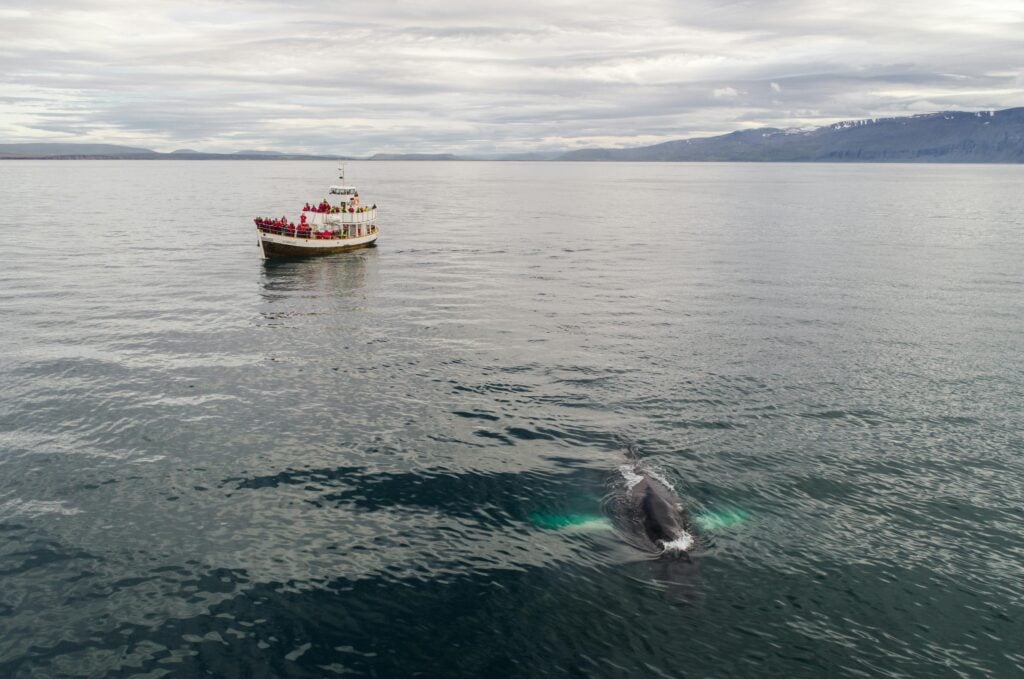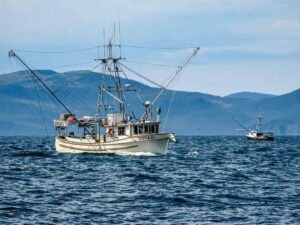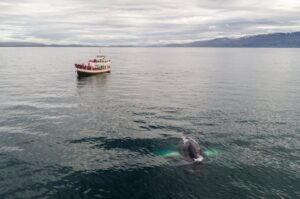The young humpback whale Starry Knight, seen entangled near Sooke on July 14 and later freed by rescuers, was spotted breaching near Galiano Island just two weeks later—an inspiring sign that recovery is underway.
“Now we’ll be able to note this tragic event in Starry Knight’s life, follow its recovery, and hopefully see it return to the Salish Sea for years to come,” said Erin Gless, Executive Director of the Pacific Whale Watch Association.
A Coordinated, Multi-Day Rescue Operation
Starry Knight was first reported entangled on July 14 near Sooke and was observed the next day by whale-watchers with Outer Island Excursions near Rosario Strait, over 40 miles from the original sighting. The crew stayed with the whale at a safe distance and maintained visual contact until qualified responders arrived.
Rescuers described the whale’s injuries as “significant,” with approximately 200 feet of rope wrapped around its body and multiple lines cutting deep into its tail. Cascadia noted that the whale was not able to use its tail to swim and was instead using its front flippers to propel it forward.
Over several hours, responders methodically made three precise cuts—one on each fluke and one around the tailstock—working at a safe distance using poles to avoid risk to both whale and crew.
“As soon as the final line was cut, the whale began slowly swimming away,” said Doug Sandilands, a lead responder with Cascadia.
A Rare Success—Among Many Tragedies
Researchers from the Marine Education & Research Society (MERS) estimate that roughly 47% to 50% of humpback whales observed in BC waters display scarring consistent with past entanglements.
Fisheries and Oceans Canada also documented 45 entangled whales in BC in 2022 alone—but experts believe many go unreported.
Multiple whales with missing or damaged flukes have been seen in BC waters, such as the whale seen near Campbell River without a tail. Whales without their flukes or a portion of their tails rarely survive as they are unable to swim properly. This means reduced effectiveness in hunting and an increased probability of falling prey to predators as the whales make their arduous migration journeys.
From Eyewitnesses to Lifesavers

Whale watchers and recreational boaters are often the first to detect entangled whales. Their actions can mean the difference between life and death.
“Without [the whale-watching crew], this whale would likely have suffered the same fate as the tailless whales seen last year in these same waters,” said Jenn Tackaberry, another lead responder with Cascadia.
What the Public Can Do—and Not Do—When You Spot an Entangled Whale
- Report immediately: Call BC’s Incident Line at 1-800-465-4336 or VHF Channel 16.
- Stay with the whale: Remain at a safe distance (over 100 m for all whales or over 200 m if the whale is resting or with a calf) until trained responders arrive or another vessel assumes monitoring duties.
- Document from afar: Take photographs or video from a distance to avoid stressing the whale. Key shots include dorsal fins and tailstock to help identify the whale, and shots of the abdomen region will help identigy entanglement gear.
- Do NOT attempt to disentangle: Even well-meaning attempts can endanger human lives and compromise the whale’s chances for professional rescue. Removing visible surface gear may interfere with responders’ ability to tag the whale using flotation devices attached to trailing gear.
Starry Knight’s rescue is a rare success story in a region where many entangled whales are never found, let alone freed.
As more whales return to BC’s inshore waters, entanglements are expected to increase. Continued vigilance, public awareness, more protected waters, and reliable funding are essential to give other whales the same chance at survival.




